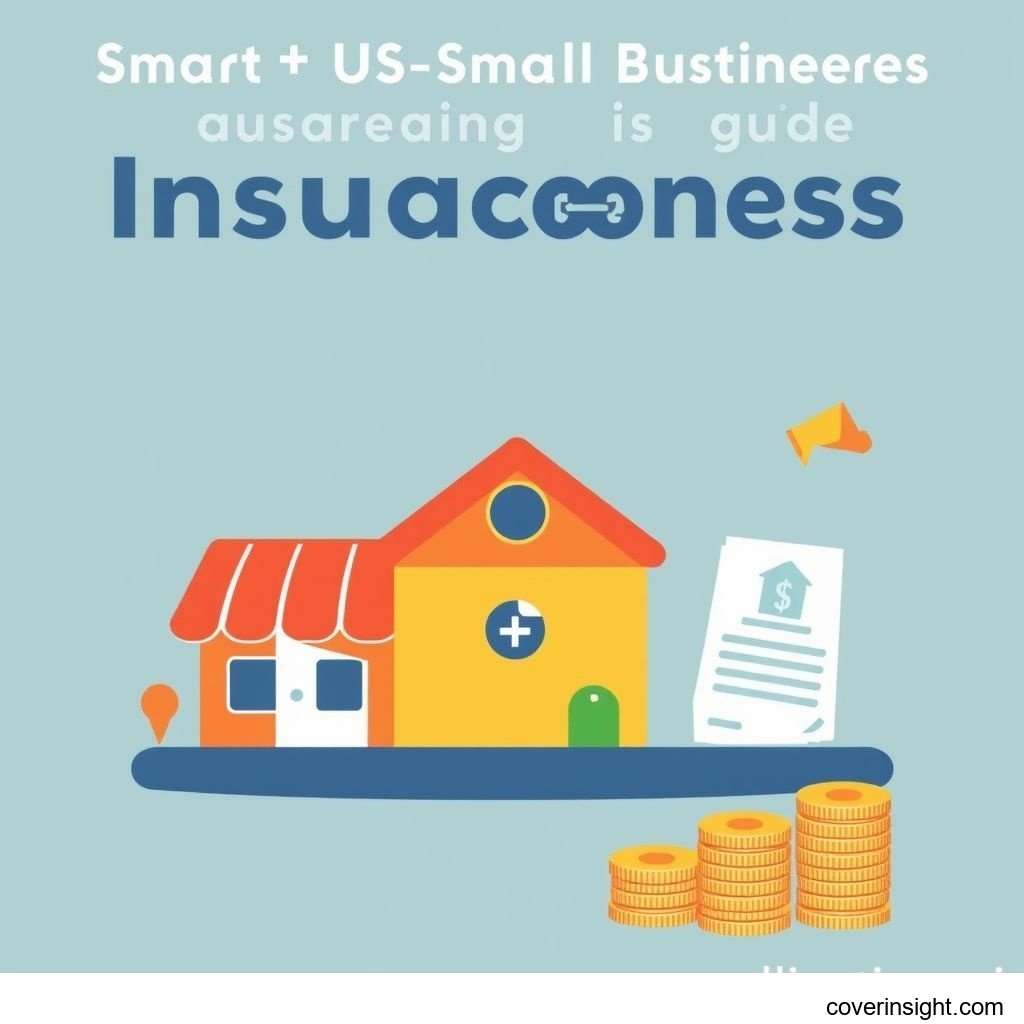Introduction
Navigating the landscape of small business insurance costs in the US for 2025 can feel like trying to hit a moving target. Yet, understanding these expenses is absolutely crucial for any small enterprise looking to safeguard its future. In a dynamic economic environment, having the right coverage isn't just a smart move; it’s often the bedrock of resilience, protecting your hard-earned assets and reputation from unforeseen risks. This guide aims to demystify the costs and considerations involved, offering insights to help you make informed decisions.
Coverage Details
Understanding what's covered—and what isn't—is paramount when budgeting for insurance. The right policy provides a safety net that can keep your business afloat when unexpected challenges arise.
What’s Included
Typically, a robust small business insurance portfolio includes several key components. General Liability Insurance is often considered foundational, covering claims of bodily injury or property damage caused by your business operations, products, or services. Think of a customer slipping in your shop; general liability would likely cover their medical bills and any potential legal costs.
Commercial Property Insurance protects your business's physical assets—your building, equipment, inventory, and furniture—from perils like fire, theft, and natural disasters. For many, this is the backbone of their financial security. If you have employees, Workers' Compensation Insurance is usually mandatory in most states, covering medical expenses and lost wages for employees injured on the job.
Professional Liability Insurance, also known as Errors & Omissions (E&O) insurance, is vital for service-based businesses (consultants, designers, IT professionals) as it protects against claims of negligence, errors, or omissions in your professional services. Lastly, a Business Owner’s Policy (BOP) often bundles general liability and commercial property insurance, offering a cost-effective solution for many small businesses. Some might also consider Cyber Liability Insurance in today's digital age, protecting against data breaches and cyber attacks, a growing concern as highlighted by the National Association of Insurance Commissioners' ongoing efforts to standardize data security protocols.
Common Exclusions
While comprehensive, no insurance policy covers everything. Common exclusions often include damages resulting from war, nuclear hazards, and intentional acts committed by the business owner. Policies typically won't cover pre-existing damages or routine wear and tear. Furthermore, specific types of losses like floods or earthquakes are often excluded from standard commercial property policies and require separate, specialized coverage. For instance, a small coffee shop owner in Florida might find their standard policy doesn't cover hurricane flood damage, necessitating a separate flood insurance policy through the National Flood Insurance Program. It’s always wise to read the fine print or consult with an insurance professional to avoid any nasty surprises down the road.
Cost Analysis
Demystifying the cost of small business insurance requires a look at the myriad factors that influence premiums and practical tips for managing those expenses.
Price Factors
The cost of small business insurance isn't a one-size-fits-all figure; it’s highly personalized. Several key elements play a significant role:
- Industry and Risk Level: A construction company, for instance, generally faces higher liability risks than a web design firm, leading to higher premiums. Businesses in high-risk sectors or those dealing with hazardous materials will inevitably pay more.
- Location: Geographic location impacts costs due to varying state regulations, local risks (e.g., natural disaster zones), and the density of businesses. For example, a business in a hurricane-prone coastal area will likely pay more for property insurance than one in a landlocked state.
- Number of Employees: More employees generally mean higher workers' compensation and general liability premiums, as there's a greater potential for claims.
- Claims History: A history of frequent or costly claims will almost certainly drive up your premiums, signaling to insurers that your business carries higher risk.
- Coverage Limits and Deductibles: Higher coverage limits (the maximum amount an insurer will pay for a claim) naturally result in higher premiums. Conversely, choosing a higher deductible (the amount you pay out-of-pocket before insurance kicks in) can lower your premium, but means you'll bear more of the initial financial burden during a claim.
- Revenue and Business Size: Larger businesses with higher revenues may face higher premiums due to the increased scope of their operations and potential liabilities.
Saving Tips
Even with the variables, there are smart ways to rein in your small business insurance costs:
- Bundle Policies: As mentioned, a Business Owner’s Policy (BOP) often combines general liability and property insurance at a lower combined rate than purchasing them separately. Think of it like getting a deal for buying in bulk.
- Implement Risk Management: Proactively mitigating risks can significantly lower your premiums. This includes implementing robust safety protocols, installing security systems, offering employee safety training, and maintaining a clean claims history. Insurers look favorably on businesses that actively work to reduce potential losses.
- Increase Deductibles: If you have a healthy emergency fund, opting for a higher deductible can noticeably reduce your monthly or annual premium payments. Just be sure you can comfortably cover that deductible if a claim arises.
- Shop Around and Compare Quotes: This is arguably the most impactful tip. Don't settle for the first quote you receive. Obtain quotes from multiple insurance providers to compare coverage and pricing. You might be surprised at the range of options available.
- Regularly Review Your Policy: As your business evolves, so do its insurance needs. Annually review your policy with your agent to ensure your coverage still aligns with your current operations. You might be over-insured in some areas or under-insured in others.
Based on my experience living in the US and observing countless small businesses, many fail to reassess their needs annually, often sticking with an outdated policy that no longer serves them best. Taking the time to review can truly pay dividends.
FAQs
How much does small business insurance cost?
The cost can vary wildly, typically ranging from a few hundred dollars to several thousand per year. Most small businesses in the US can expect to pay anywhere from $500 to $2,000 annually for a basic Business Owner's Policy (BOP). However, specialized coverage for high-risk industries or comprehensive policies can easily exceed $5,000 annually. For context, data from organizations tracking small business expenses, like the U.S. Small Business Administration (SBA), often show insurance as a significant, yet manageable, operating cost for most ventures.
What affects premiums?
Premiums are influenced by several factors, including your industry's risk level, your business's location, the number of employees, your claims history, the specific types and limits of coverage you choose, and your deductible amount. For a deeper dive into these specifics, check out our comprehensive Smart US Small Business Insurance Costs Guide 2025.
Is it mandatory?
While general liability insurance isn't universally mandated by federal law, it's often required by state regulations, contracts with clients, or landlords. Workers' Compensation Insurance, however, is mandatory in almost every state if you have employees, though specific requirements vary. For example, in Texas, it's generally optional for most private employers, a notable exception to the nationwide trend. It's always best to check with your State Insurance Departments for precise requirements in your area.
How to choose?
Choosing the right insurance involves assessing your business's specific risks, understanding what types of coverage you genuinely need, comparing quotes from multiple reputable insurers, and carefully reviewing policy terms. Don't just focus on price; prioritize adequate coverage that protects your business effectively. Consider consulting with an independent insurance agent who can offer unbiased advice and help you navigate the complexities. For more resources on making informed decisions, you can explore Insurance Resources Global.
Consequences of no coverage?
Operating without adequate small business insurance can have severe, even catastrophic, consequences. A single lawsuit—for bodily injury, property damage, or professional negligence—could result in hefty legal fees, settlements, or judgments that quickly bankrupt an uninsured business. For instance, a small restaurant in Austin, Texas, recently faced a significant lawsuit after a customer suffered food poisoning. Without proper general liability or product liability coverage, the owner had to sell personal assets to cover legal costs and medical bills, highlighting the immense risk. Furthermore, lacking mandatory coverage, like workers' compensation, can lead to substantial fines, penalties, and even criminal charges in some states. It’s simply not a risk worth taking. This Smart 2025 US Small Business Insurance Costs Guide should underscore the importance of preparation.








Comments